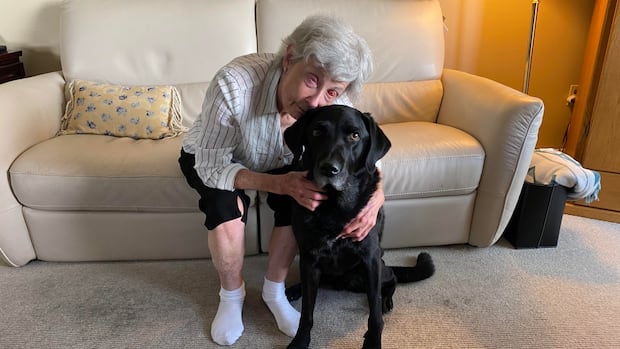“Do you want to go faster?”
Jayne Imeson already knew the answer she was going to get from her six-year-old son, Casey, sitting astride his new steed in a park in Central Saanich, B.C.
He nodded with a smile.
“Always faster — this kid loves his speed,” Imeson said.
Casey’s usual ride is a Fjord horse named Valla, but on Thursday, he became the first official user of the MiraColt horse-riding motion simulator developed for the Victoria Therapeutic Riding Association (VTRA).
The first-of-its-kind device combines a commercially available riding simulator with an app-based software application designed by CanAssist, an organization part of the University of Victoria, dedicated to helping people with disabilities.
The system allows riders to control the speed of their simulated ride through a variety of virtual trails. The university says it’s aimed particularly at people unable to ride a real horse.
Casey has cerebellar ataxia affecting his muscle control, but he can ride Valla at the VTRA, which has 13 horses of different sizes and kinds.
But Casey’s toothy grin as he rode the MiraColt suggested it was a good substitute.
Users who straddle and sway on the device the size of a large suitcase can pick the scene displayed on a screen — a local park, an urban street or the Arizona desert.
“It replicates the movement of a horse at the gait of a walk,” said Liza Gagel, executive director of the VTRA.
“It can go from a very slow walk to a very, very fast walk, and the walk is actually the most beneficial gait for therapeutic purposes, for both physical and mental movement.”
Gagel said the simulator had the promise to help her organization meet growing demand, as they are limited by the number of hours, horses, and staff they have.
“So we are trying to figure out how we are going to meet the needs of our community, and then CanAssist showed up at the right time,” she said.
Paul Green, associate director of operations and technology development with CanAssist, says the project is an “ideal example” of the collaborations they like to work on.
“As much fun as it could be for me and the tech development team to hop into a room and start thinking of creating the next greatest assistive technology, that’s not how we operate,” Green said. “We work in response and ideate in response to requests from the community.”
That could be an individual with a disability, a clinician, an educator, or an organization like the VTRA, Green says. CanAssist determines whether there’s an existing solution, whether that can be modified, or whether they need to design a new one from scratch.
“This project was essentially a combination of that — some of it existed in terms of the MiraColt mechanical piece, but connecting that with a CanAssist-designed, more immersive experience for their clients and participants.”
About 230 participants take part in the riding association’s program, Gagel said, with 50 more people waiting.
She said the simulator would allow riders to warm up their muscles and improve core strength, or allow people with behavioural challenges to release some of their energy, before riding a real horse.
The simulator can also easily move to other locations.
“We can actually pick it up and take it to clinics or a physiotherapist’s office or people’s homes, if that is a need,” Gagel said.
Imeson says she’s seen the benefits of therapeutic riding.
Casey has been riding with the association for two years, and the improvements have “truly been incredible.”

She said the simulator “does an incredible job of replicating the horse movement,” and she believes it would help her son make additional gains.
“When he is in session here … he’s always improving his abilities and his balance and his motor skills and his reflexes,” she said. “It’s leaps and bounds.”
The simulator is the third project between the riding association and CanAssist during a 15-year collaboration with two local donors, Lynda and Murray Farmer, covering the full cost of the project, which is undisclosed.
The other projects include a saddle support to help a rider with cerebral palsy sit upright, and a set of steps resembling a small staircase that helps riders get on a cart for one of the VTRA’s programs.







